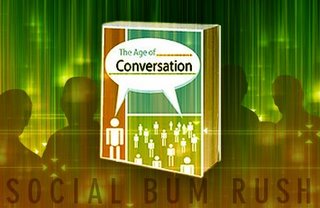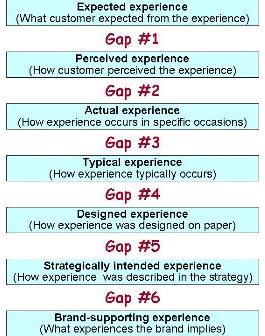 What happens when you give 100 of the world’s leading marketing professionals, writers, thinkers, innovators and bloggers a book title and an invitation to write about that topic in 400 words or less?The Age of Conversation happens. The collaborative project organized by Gavin Heaton and Drew McLellan started as an off-hand comment, grew into an e-book and ultimately a printed book, The Age of Conversation takes the individual musings of 100+ authors from all over the world, many of whom have no connection other than shared belief in the power of social media, and turns them into a collection that overflows with creativity and insight.
What happens when you give 100 of the world’s leading marketing professionals, writers, thinkers, innovators and bloggers a book title and an invitation to write about that topic in 400 words or less?The Age of Conversation happens. The collaborative project organized by Gavin Heaton and Drew McLellan started as an off-hand comment, grew into an e-book and ultimately a printed book, The Age of Conversation takes the individual musings of 100+ authors from all over the world, many of whom have no connection other than shared belief in the power of social media, and turns them into a collection that overflows with creativity and insight.
And just for today, March 29, The Age of Conversation is more than a book. It’s part of a social media experiment. And you can be part of it.
 The idea is to generate as much web and Amazon activity as possible on a single day, both to drive the book’s ranking on Amazon upward and to create momentum for the book’s sequel (more about this in a moment…hint: I’m involved). If you use this link to buy it today, you’ll create a win-win-win:
The idea is to generate as much web and Amazon activity as possible on a single day, both to drive the book’s ranking on Amazon upward and to create momentum for the book’s sequel (more about this in a moment…hint: I’m involved). If you use this link to buy it today, you’ll create a win-win-win:
- You get a terrific social media and marketing book.
- The book’s editors and contributors get the thrill of seeing it sail up the Amazon charts.
- Variety, the Children’s Charity receives all proceeds, including those from the book’s Amazon affiliate link.
The momentum’s important, because editors Drew McLellan and Gavin Heaton are at it again. And this time I’ll be one of the contributors! I’m excited to be one of the 275 marketing and social media writers and bloggers selected to be part of The Age of Conversation ’08, now in the works. I hope you’ll click on some of the other names in the list to see the diversity of backgrounds and experiences represented:
Adam Crowe, Adrian Ho, Aki Spicer, Alex Henault, Amy Jussel, Andrew Odom, Andy Nulman, Andy Sernovitz, Andy Whitlock, Angela Maiers, Ann Handley, Anna Farmery, Armando Alves, Arun Rajagopal, Asi Sharabi, Becky Carroll, Becky McCray, Bernie Scheffler, Bill Gammell, Bob Carlton, Bob LeDrew, Brad Shorr, Bradley Spitzer, Brandon Murphy, Branislav Peric, Brent Dixon, Brett Macfarlane, Brian Reich, C.C. Chapman, Cam Beck, Casper Willer, Cathleen Rittereiser, Cathryn Hrudicka, Cedric Giorgi, Charles Sipe, Chris Kieff, Chris Cree, Chris Wilson, Christina Kerley (CK), C.B. Whittemore, Clay Parker Jones, Chris Brown, Colin McKay, Connie Bensen, Connie Reece, Cord Silverstein, Corentin Monot, Craig Wilson, Daniel Honigman, Dan Goldstein, Dan Schawbel, Dana VanDen Heuvel, Dan Sitter, Daria Radota Rasmussen, Darren Herman, Darryl Patterson, Dave Davison, Dave Origano, David Armano, David Bausola, David Berkowitz, David Brazeal, David Koopmans, David Meerman Scott, David Petherick, David Reich, David Weinfeld, David Zinger, Deanna Gernert, Deborah Brown, Dennis Price, Derrick Kwa, Dino Demopoulos, Doug Haslam, Doug Meacham, Doug Mitchell, Douglas Hanna, Douglas Karr, Drew McLellan, Duane Brown, Dustin Jacobsen, Dylan Viner, Ed Brenegar, Ed Cotton, Efrain Mendicuti, Ellen Weber, Emily Reed, Eric Peterson, Eric Nehrlich, Ernie Mosteller, Faris Yakob, Fernanda Romano, Francis Anderson, G. Kofi Annan, Gareth Kay, Gary Cohen, Gaurav Mishra, Gavin Heaton, Geert Desager, George Jenkins, G.L. Hoffman, Gianandrea Facchini, Gordon Whitehead, Graham Hill, Greg Verdino, Gretel Going & Kathryn Fleming, Hillel Cooperman, Hugh Weber, J. Erik Potter, J.C. Hutchins, James Gordon-Macintosh, Jamey Shiels, Jasmin Tragas, Jason Oke, Jay Ehret, Jeanne Dininni, Jeff De Cagna, Jeff Gwynne, Jeff Noble, Jeff Wallace, Jennifer Warwick, Jenny Meade, Jeremy Fuksa, Jeremy Heilpern, Jeremy Middleton, Jeroen Verkroost, Jessica Hagy, Joanna Young, Joe Pulizzi, Joe Talbott, John Herrington, John Jantsch, John Moore, John Rosen, John Todor, Jon Burg, Jon Swanson, Jonathan Trenn, Jordan Behan, Julie Fleischer, Justin Flowers, Justin Foster, Karl Turley, Kate Trgovac, Katie Chatfield, Katie Konrath, Kenny Lauer, Keri Willenborg, Kevin Jessop, Kris Hoet, Krishna De, Kristin Gorski, Laura Fitton, Laurence Helene Borei, Lewis Green, Lois Kelly, Lori Magno, Louise Barnes-Johnston, Louise Mangan, Louise Manning, Luc Debaisieux, Marcus Brown, Mario Vellandi, Mark Blair, Mark Earls, Mark Goren, Mark Hancock, Mark Lewis, Mark McGuinness, Mark McSpadden, Matt Dickman, Matt J. McDonald, Matt Moore, Michael Hawkins, Michael Karnjanaprakorn, Michelle Lamar, Mike Arauz, Mike McAllen, Mike Sansone, Mitch Joel, Monica Wright, Nathan Gilliatt, Nathan Snell, Neil Perkin, Nettie Hartsock, Nick Rice, Oleksandr Skorokhod, Ozgur Alaz, Paul Chaney, Paul Hebert, Paul Isakson, Paul Marobella, Paul McEnany, Paul Tedesco, Paul Williams, Pet Campbell, Pete Deutschman, Peter Corbett, Phil Gerbyshak, Phil Lewis, Phil Soden, Piet Wulleman, Rachel Steiner, Sreeraj Menon, Reginald Adkins, Richard Huntington, Rishi Desai, Beeker Northam, Rob Mortimer, Robert Hruzek, Roberta Rosenberg, Robyn McMaster, Roger von Oech, Rohit Bhargava, Ron Shevlin, Ryan Barrett, Ryan Karpeles, Ryan Rasmussen, Sam Huleatt, Sandy Renshaw, Scott Goodson, Scott Monty, Scott Townsend, Scott White, Sean Howard, Sean Scott, Seni Thomas, Seth Gaffney, Shama Hyder, Sheila Scarborough, Sheryl Steadman, Simon Payn, Sonia Simone, Spike Jones, Stanley Johnson, Stephen Collins, Stephen Cribbett, Stephen Landau, Stephen Smith, Steve Bannister, Steve Hardy, Steve Portigal, Steve Roesler, Steven Verbruggen, Steve Woodruff, Sue Edworthy, Susan Bird, Susan Gunelius, Susan Heywood, Tammy Lenski, Terrell Meek, Thomas Clifford, Thomas Knoll, Tiffany Kenyon, Tim Brunelle, Tim Buesing, Tim Connor, Tim Jackson, Tim Longhurst, Tim Mannveille, Tim Tyler, Timothy Johnson, Tinu Abayomi-Paul, Toby Bloomberg, Todd Andrlik, Troy Rutter, Troy Worman, Uwe Hook, Valeria Maltoni, Vandana Ahuja, Vanessa DiMauro, Veronique Rabuteau, Wayne Buckhanan, William Azaroff, Yves Van Landeghem
[via mediatortech.com]
 Will Richardson over at the education-oriented blog Weblogg-ed had an interesting post today about a recent FastCompany interview with Gartner researcher, Tom Austin. In the interview, Austin makes a pretty compelling argument for implementing and using social tools in the workplace and suggests that the real value from IT departments of the future will come not so much from their technology knowhow, but rather from an ability to facilitate relationships (the fundamental element of business) through social tools.
Will Richardson over at the education-oriented blog Weblogg-ed had an interesting post today about a recent FastCompany interview with Gartner researcher, Tom Austin. In the interview, Austin makes a pretty compelling argument for implementing and using social tools in the workplace and suggests that the real value from IT departments of the future will come not so much from their technology knowhow, but rather from an ability to facilitate relationships (the fundamental element of business) through social tools. What happens when you give 100 of the world’s leading marketing professionals, writers, thinkers, innovators and bloggers a book title and an invitation to write about that topic in 400 words or less?The Age of Conversation happens. The collaborative project organized by
What happens when you give 100 of the world’s leading marketing professionals, writers, thinkers, innovators and bloggers a book title and an invitation to write about that topic in 400 words or less?The Age of Conversation happens. The collaborative project organized by 
 In a
In a  My D-Link wireless router died this past weekend. Again! and I’m not a happy customer.
My D-Link wireless router died this past weekend. Again! and I’m not a happy customer. Forrester Analyst and all-around smart guy Bruce Temkin
Forrester Analyst and all-around smart guy Bruce Temkin 